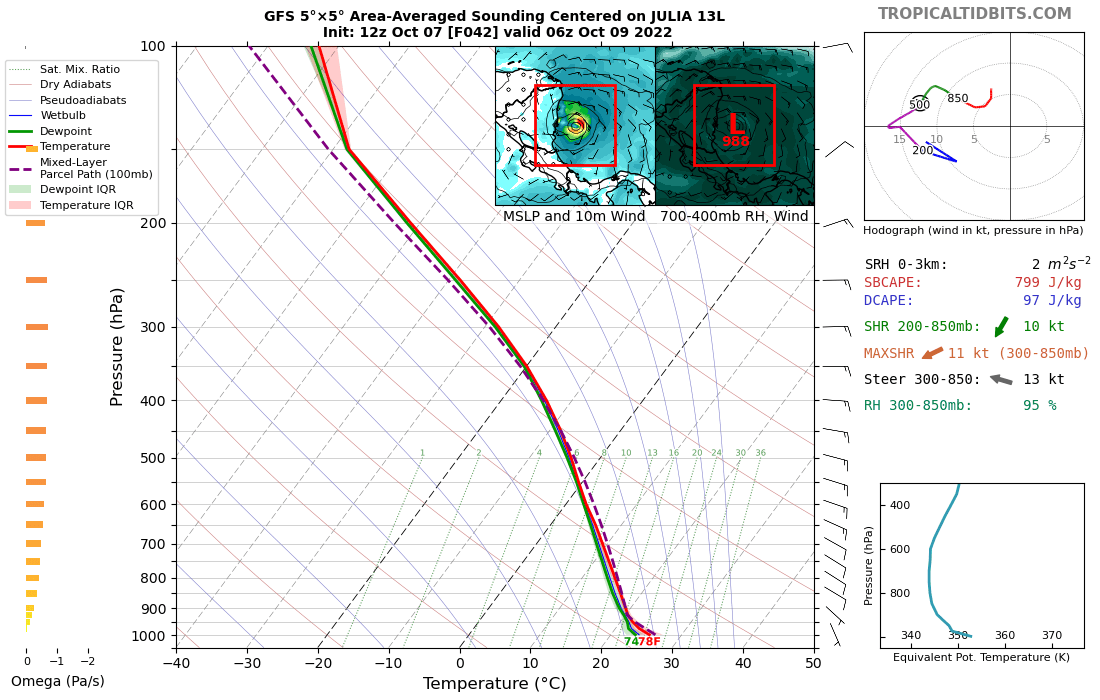
It's probably worth noting that a lot of this wind shear (black arrows) is being driven by the position and strength of upper-level features rather than varying mid-level flow. In fact, winds beneath 500mb are relatively uniform and in line with the storm's motion (green arrow). 
https://twitter.com/WxTca/status/1578395857266712576

IMO, this is reflected pretty well on satellite imagery, where cirrus outflow from thunderstorms is being shunted south while shallow convection continues to build around the better defined surface circulation. Could allow for some deepening over the coming hours before upper...
...winds over #Julia weaken and become more easterly. Once that happens, more significant (and possibly even rapid) intensification could set in depending on the state of the TC's inner core by then. Fairly large variety of predictors show a moderate shot at RI in the timeframe. 



• • •
Missing some Tweet in this thread? You can try to
force a refresh










